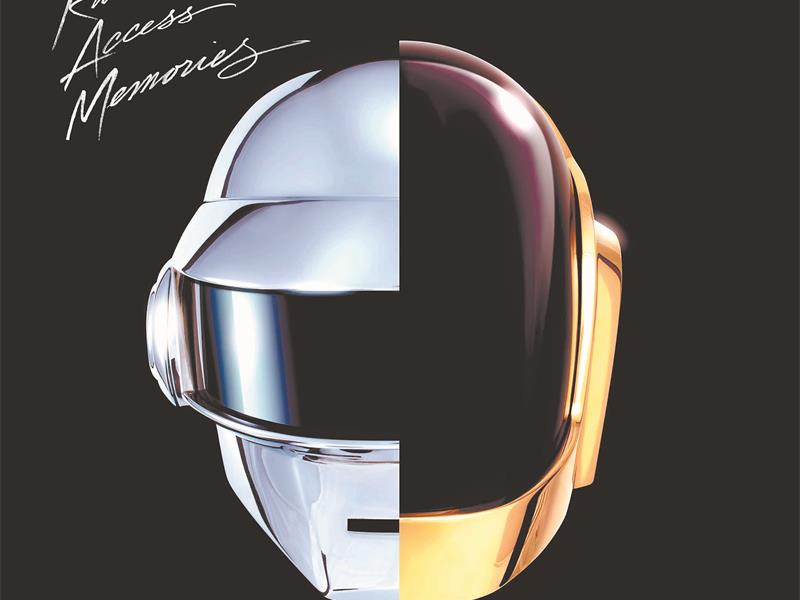Grunge returned to the catwalk, Daft Punk swept dance floors and the "selfie" made it into the dictionary.

ELECTRIC DREAMS. Daft Punk’s ‘Random Access Memories’.
Picture: Supplied.
Here are some of the lifestyle trends of 2013:
1. Selfies
The scene at Nelson Mandela’s memorial service served as confirmation if any were needed of the newfound place of the “selfie” in popular culture. As the ceremony dragged on, US President Barack Obama, British Prime Minister David Cameron and Danish Prime Minister Helle Thorning-Schmidt were captured posing for a self-portrait like a group of excited teenagers.

SAY CHEESY! US President Barack Obama and British Prime Minister David Cameron pose for a selfie picture with Denmark’s Prime Minister Helle Thorning-Schmidt, centre, next to first lady Michelle Obama at the memorial service of former President Nelson Mandela. Picture: AFP.
Originally a social media buzzword, “selfie” was named word of the year in November and admitted to the online version of the Oxford English dictionary. It is defined as “a photograph that one has taken of oneself, typically one taken with a smartphone or webcam and uploaded to a social media website”.
2. Grunge is back
On the catwalk, Saint Laurent’s cult designer Hedi Slimane served up helpings of grunge, prompting a mixture of consternation and rave reviews.
Dismissed as nothing new by some critics, his creations do have a habit of becoming popular. The designer, who helped give the world skinny jeans and was at the helm of Christian Dior menswear until 2007, is considered among the most influential of his generation.
His babydoll dresses teamed with sloppy cardigans, biker boots and heavy khol-lined eyes divided fashion watchers, many of whom feel Slimane’s designs are “just not Yves Saint Laurent”.
3. Twerking
This new entry into the Oxford Dictionary online exploded into the mainstream when former Disney child star Miley Cyrus did the dance at the MTV video music awards in August. Cyrus’s sexually suggestive performance at an event with a family audience outraged middle America.
Restricted to teenagers and performers for now, it was defined by Oxford Dictionaries as “to dance to popular music in a sexually provocative manner involving thrusting hip movements and a low, squatting stance”. Twerking is believed to have originated in US hip-hop music culture via the New Orleans bounce music scene.
4. Electronic music
In music, French electronic duo Daft Punk, made up of musicians Guy-Manuel de Homem-Christo and Thomas Bangalter, made a triumphant return to the music charts. Random Access Memories, the duo’s fourth album since 1997, went into the US Billboard 200 album chart at number one.
The first single from the album, Get Lucky, co-written by Chic’s Nile Rodgers and featuring vocals from US rapper Pharrell Williams, was a top 10 hit in over 30 countries.
“Electronic music right now is in its comfort zone and it’s not moving one inch,” Bangalter told Rolling Stone magazine.
5. Online activity
The moreish, absorbing Candy Crush Saga became an online gaming sensation with its brightly coloured exploding sweets. Players attempt to line up three or more sweets such as yellow lemon drops, orange lozenges and red jelly beans before progressing to higher levels.
As online games grew in popularity, offline games were expected to record an irreversible decline in 2013.
Asian social networks emerged as rivals to American giants Facebook and Skype. China’s WeChat and Japan’s Line, which lets users make free calls, send instant messages, photos and short videos, roll together attributes from Facebook, Skype and messaging application WhatsApp.
Line signalled its determination to conquer Europe with a public relations offensive in France and Italy. Line has hooked many users with its stickers – funny, cartoon-like figures that express emotions in a way deemed far more original and fun than traditional emoticons.
WeChat, meanwhile allows users to post figures that move about dancing, blowing kisses or punching the air. Both networks supply a selection of “stickers” that users have to pay for, representing 30% of Line’s overall turnover.
WeChat already has 500 million users including 100 million outside China.
– Sapa
Download our app






